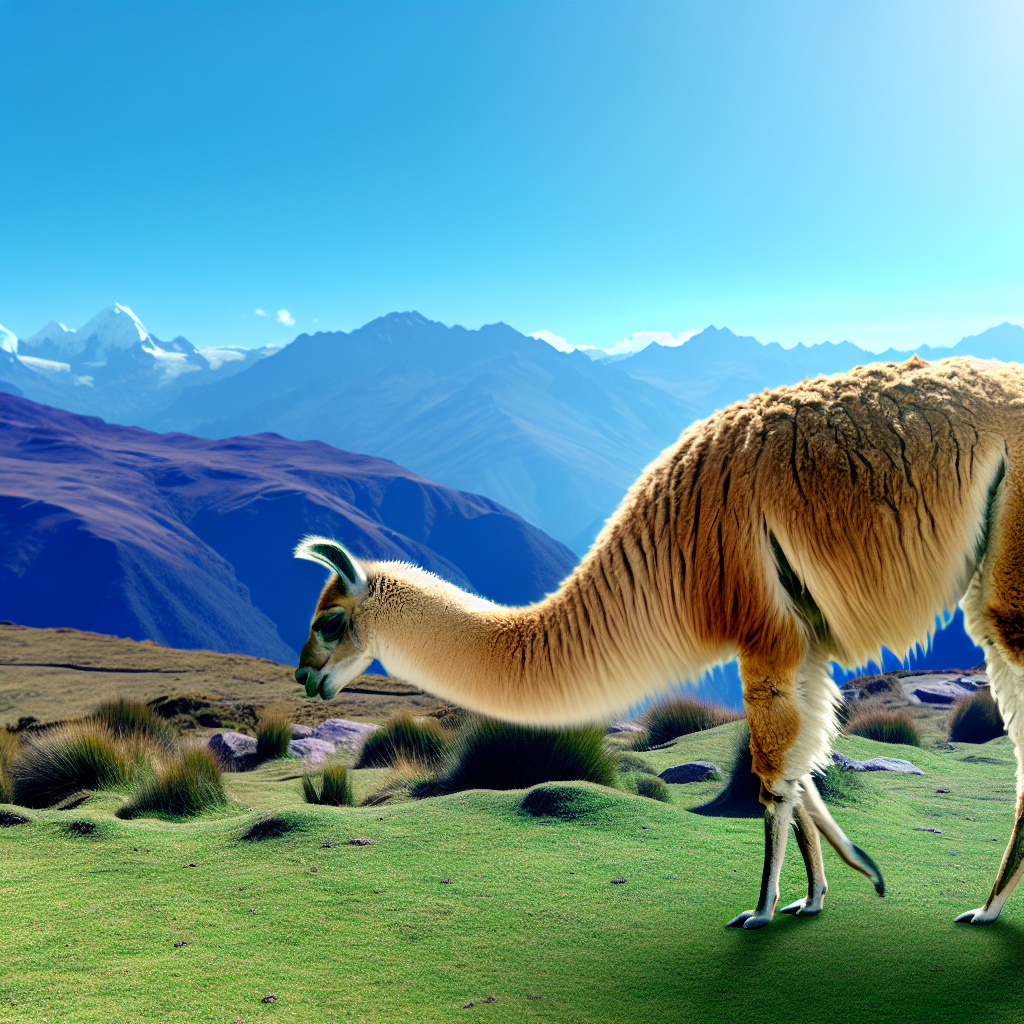Vicuña: The Ultimate Guide to the World’s Most Exclusive Fiber
Introduction
Luxury fashion has always been about rarity, craftsmanship, and an uncompromising level of quality. Among the rarest and most valuable materials in the world is vicuña fiber, often referred to as “The Silk of the Andes.” Coveted by royalty, high-fashion designers, and discerning individuals who appreciate the epitome of luxury, vicuña wool stands in a class of its own. This ultra-exclusive fiber, sourced from the elusive vicuña, is the pinnacle of sustainable luxury, prized not only for its unparalleled softness but also for its extreme scarcity.
The vicuña (Vicugna vicugna) is a wild relative of the alpaca and llama, native to the high-altitude regions of the Andes Mountains across Peru, Bolivia, Argentina, and Chile. Historically, vicuña wool was reserved exclusively for Incan royalty due to the difficulty of procuring it and the laborious process of harvesting it ethically. Even today, the animal remains protected by strict conservation laws that limit its shearing to only once every two to three years in closely regulated government-sanctioned programs.
What makes vicuña fiber extraordinary is its miraculous combination of lightness and warmth. Unlike conventional wool, vicuña fibers are thinner than cashmere, measuring just 12 microns in diameter, making them the finest animal fiber known to humankind. The hollow structure of these fibers provides natural insulation, trapping heat while remaining lightweight and breathable. Due to this unique molecular arrangement, vicuña garments are astonishingly warm, yet they drape with an effortless softness unmatched by any other wool or fabric.
Vicuña fiber is also incredibly rare. A single vicuña produces only about 200 grams of usable wool per shearing, contributing to its exclusivity. Processing vicuña wool requires meticulous hand-sorting and weaving techniques, often carried out by skilled artisans in Peru and Italy. These extensive efforts contribute to its astronomical prices, with vicuña garments, such as scarves or sweaters, often costing several thousand dollars each.
This guide explores the significance of vicuña, its unique properties, exclusive applications, and why it remains the gold standard of luxury textiles. Whether you are an enthusiast of fine craftsmanship or looking to invest in one of the rarest materials in the world, understanding vicuña will transform your appreciation for high-end fashion.
The Science Behind the World’s Finest Wool
Vicuña wool’s exceptional properties have been studied by textile experts and materials scientists due to its unique fiber structure. According to the Journal of Textile Engineering & Fashion Technology, vicuña’s fibers are smaller in diameter than cashmere, merino, and alpaca wool, giving them a remarkably soft texture. Because the fibers are naturally elastic, garments made from vicuña possess a superior drape and maintain their shape over time.
One of the most remarkable findings in textile science involves vicuña wool’s thermal efficiency. Researchers at the National Institute of Textile Engineering have confirmed that the fiber’s microscopic scales and hollow core structure allow it to retain heat while remaining breathable. This feature is especially beneficial in high-altitude Andean climates, where temperatures fluctuate drastically between day and night.
Elite fashion houses capitalize on these natural thermal properties, crafting garments that provide superior insulation without adding unnecessary weight.
Medical and Hypoallergenic Benefits: A Game-Changer for Sensitive Skin
Beyond luxury, vicuña wool offers notable dermatological advantages. Studies conducted by the International Textile and Apparel Association indicate that vicuña fibers contain no lanolin—the natural oil found in sheep’s wool—making them hypoallergenic. For individuals with sensitive skin or wool allergies, vicuña is a transformative alternative that provides warmth without irritation.
Additionally, the fiber’s naturally soft structure prevents itching or prickling sensations, commonly associated with traditional wool products. Because vicuña wool has superior moisture-wicking abilities, it enhances comfort by keeping the wearer’s skin dry in varying climates—a feature particularly useful for high-end winter apparel.
Ethical and Sustainable Luxury: Protecting the Vicuña
Unlike other luxury fibers that come from domesticated animals, vicuña wool requires ethical and sustainable harvesting methods. The Convention on International Trade in Endangered Species (CITES) has implemented strict regulations to protect vicuñas from poaching and illegal trade.
The recognized “Chaccu” tradition—a time-honored sustainable shearing method—ensures that animals are carefully rounded up, shorn briefly under supervision, and then released into the wild. These conservation efforts have helped revitalize vicuña populations, allowing the sustainable continuation of this ancient luxury.
The resurgence of ethical vicuña farming has created economic opportunities for indigenous Andean communities, ensuring that villagers who participate in responsible fiber collection receive fair wages and social benefits. These initiatives not only uphold environmental conservation but also maintain the historically rich tradition of vicuña wool craftsmanship.
Conclusion: Why Vicuña is the Gold Standard of High-End Fashion
Vicuña fiber embodies the essence of rarity, luxury, and unparalleled craftsmanship. As the ultimate natural textile, its softness, warmth, and exclusivity make it one of the most desirable materials in the world.
Beyond its intrinsic qualities, vicuña wool represents a commitment to sustainability, indigenous heritage, and ethical fashion. For connoisseurs of high-end apparel, owning a vicuña garment is not just a fashion statement—it’s an investment in tradition, sustainability, and the highest echelon of textile luxury.
Whether acquired as a bespoke scarf, an opulent coat, or a collector’s piece, vicuña fiber remains an iconic symbol of status and refinement in the modern luxury landscape.
Summary:
Vicuña fiber is an exceptionally rare and luxurious material prized for its unparalleled softness, warmth, and exclusivity. This guide explores the science behind vicuña’s unique properties, its medical and hypoallergenic benefits, and the ethical and sustainable methods used to harvest this ancient textile. As the gold standard of high-end fashion, owning a vicuña garment is an investment in tradition, sustainability, and the pinnacle of luxury.
References:
– [Fiber Structure and Composition of South American Camelid Wools](https://medcraveonline.com/JTEFT/fiber-structure-and-composition-of-south-american-camelid-wools.html)
– [Thermal Properties of Textile Fibers](https://www.sciencedirect.com/science/article/abs/pii/S0040500021001964)
– [Textile Fibers and Allergic Reactions](https://www.researchgate.net/publication/327667878_Textile_Fibers_and_Allergic_Reactions)
– [Convention on International Trade in Endangered Species – Vicuña Protection](https://cites.org/eng/prog/vicuna)

Dominic E. is a passionate filmmaker navigating the exciting intersection of art and science. By day, he delves into the complexities of the human body as a full-time medical writer, meticulously translating intricate medical concepts into accessible and engaging narratives. By night, he explores the boundless realm of cinematic storytelling, crafting narratives that evoke emotion and challenge perspectives. Film Student and Full-time Medical Writer for ContentVendor.com




